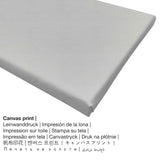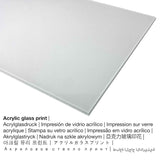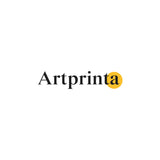Matteo di Giovanni, 1470 - The Crucifixion - fine art print
Tax included. Shipping calculated at checkout.
The Crucifixion is a work of art created by Matteo di Giovanni. The version of the artwork was made with the following size: Framed: 39,4 x 38,1 x 4,5 cm (15 1/2 x 15 x 1 3/4 in); Unframed: 29,8 x 31 cm (11 3/4 x 12 3/16 in). Tempera and oil with gold on wood panel was used by the artist as the technique for the painting. Besides, this work of art is included in the The Cleveland Museum of Art's art collection, which is one of the leading museums worldwide that builds, preserves, studies, and shares its outstanding collections of art from all periods and parts of the world, generating new scholarship and understanding, while serving as a social and intellectual hub for its community. With courtesy of - The Cleveland Museum of Art (public domain license). : Bequest of James Parmelee. Furthermore, alignment is in square format and has an aspect ratio of 1 : 1, meaning that the length is equal to the width. Matteo di Giovanni was a male painter of Italian nationality, whose artistic style can be classified as Early Renaissance. The European artist was born in the year 1430 and passed away at the age of 65 in the year 1495.
Order the item material you would like to hang up in your home
In the dropdown lists next to the product offering you can choose a material and a sizeaccording to your individual preferences. The following sizes and materials are the options we offer you for individualization:
- The canvas print: A printed canvas, not to be mistaken with a real painting on a canvas, is a digital image applied on a cotton canvas material. Canvas Prints have the advantage of being relatively low in weight, which means that it is quite simple to hang up your Canvas print without additional wall-mounts. Canvas prints are suitable for any type of wall.
- Poster print (canvas material): Our poster is a printed cotton canvas with a nice surface structure. Please keep in mind, that depending on the size of the canvas poster print we add a white margin of around 2-6cm around the print motif to facilitate the framing.
- Aluminium dibond print: Aluminium Dibond prints are metal prints with a true depth - for a modern look and non-reflective surface. A direct Direct Print on Aluminum Dibond is your excellent introduction to art replicas with aluminum. Colors are luminous, fine details are very clear, and you can literally feel the matte appearance of the fine art print.
- Acrylic glass print: An print on acrylic glass, which is often denoted as a print on plexiglass, will convert your favorite original artwork into beautiful décor. In addition to that, the acrylic glass print offers a great alternative option to canvas and aluminidum dibond fine art replicas. The plexiglass protects your chosen art print against light and heat for decades.
Legal note: We try our utmost in order to describe the art products as precisely as possible and to display them visually in our shop. At the same time, the colors of the printing material and the printing might vary marginally from the representation on the monitor. Depending on the settings of your screen and the condition of the surface, colors may not be printed one hundret percent realistically. Considering that all art reproductions are printed and processed by hand, there may as well be minor deviations in the exact position and the size of the motif.
Structured product details
| Print categorization: | fine art reproduction |
| Method of reproduction: | digital reproduction |
| Manufaturing technique: | UV direct print |
| Manufacturing: | Germany |
| Type of stock: | on demand |
| Product use: | wall decoration, home décor |
| Orientation: | square format |
| Image ratio: | 1 : 1 |
| Image aspect ratio meaning: | the length is equal to the width |
| Materials you can select: | acrylic glass print (with real glass coating), canvas print, metal print (aluminium dibond), poster print (canvas paper) |
| Canvas print (canvas on stretcher frame) options: | 20x20cm - 8x8", 30x30cm - 12x12", 50x50cm - 20x20", 70x70cm - 28x28", 100x100cm - 39x39", 150x150cm - 59x59", 180x180cm - 71x71" |
| Acrylic glass print (with real glass coating): | 20x20cm - 8x8", 30x30cm - 12x12", 50x50cm - 20x20", 70x70cm - 28x28", 100x100cm - 39x39", 150x150cm - 59x59", 180x180cm - 71x71" |
| Poster print (canvas paper) options: | 30x30cm - 12x12", 50x50cm - 20x20", 70x70cm - 28x28", 100x100cm - 39x39" |
| Aluminium dibond print (aluminium material): | 20x20cm - 8x8", 30x30cm - 12x12", 50x50cm - 20x20", 70x70cm - 28x28", 100x100cm - 39x39" |
| Art print framing: | no frame |
Structured table of the artwork
| Title of the painting: | "The Crucifixion" |
| Classification: | painting |
| Umbrella term: | classic art |
| Artwork century: | 15th century |
| Artwork year: | 1470 |
| Age of artwork: | around 550 years old |
| Original medium of artwork: | tempera and oil with gold on wood panel |
| Dimensions of the original artpiece: | Framed: 39,4 x 38,1 x 4,5 cm (15 1/2 x 15 x 1 3/4 in); Unframed: 29,8 x 31 cm (11 3/4 x 12 3/16 in) |
| Museum / location: | The Cleveland Museum of Art |
| Place of the museum: | Cleveland, Ohio, United States of America |
| Website Museum: | www.clevelandart.org |
| License of artwork: | public domain |
| Courtesy of: | The Cleveland Museum of Art |
| Artwork creditline: | Bequest of James Parmelee |
The artist
| Name: | Matteo di Giovanni |
| Gender: | male |
| Artist nationality: | Italian |
| Jobs: | painter |
| Home country: | Italy |
| Artist category: | old master |
| Art styles: | Early Renaissance |
| Died aged: | 65 years |
| Born in the year: | 1430 |
| Year died: | 1495 |
© Copyright of - Artprinta (www.artprinta.com)
Additional description by the museum (© - The Cleveland Museum of Art - The Cleveland Museum of Art)
This small picture belonged to a predella, a series of subsidiary panels consisting of narrative scenes and situated at the bottom of an altarpiece. Predella paintings are significant because the artist was allowed more freedom and inventiveness here than in the higher part of the altarpiece. In this Crucifixion scene, the harmony of colors, the monumentality of the figures, and the symmetry of the composition all reflect the classical spirit of Renaissance Italy. Moreover, the panel shows some characteristics of the traditional Sienese school—such as the quality and elegance of the lines—which persists in Giovanni’s works.














